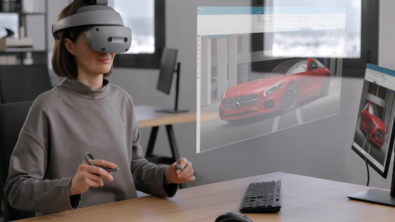The Future of Medical Devices and Pharmaceuticals with Jim Thompson – Part 1 – Summary


Welcome to the Industry Forward Podcast with Dale Tutt! Join Dale Tutt, Vice President of Industry Strategy at Siemens Digital Industries Software, and host Conor Peick to learn more about the trends, technologies, and opportunities affecting some of the largest and most important industries in the world. In each episode we will be joined by a seasoned expert to dive into the dynamic challenges and creative solutions being developed in a variety of industries to learn how companies are transforming for the future. These experts will tell us about everything from medical devices to heavy equipment and more and explain how each of these industries is approaching digitalization and the digital twin to overcome the hurdles they are facing.
In the first episode of our new series, Dale and I spoke with Jim Thompson, Sr. Director of Digital Strategy for Medical Devices and the Pharmaceutical Industries with Siemens Digital Industries Software. Jim, Dale, and I discussed the ongoing impacts of the COVID-19 pandemic on the medical device and pharmaceutical industries and covered a few other trends in supply chains, development methods, and more.
Jim started us off by breaking down recent developments in the medical device and pharmaceutical industry. Jim explained how the pandemic highlighted the risk that was built in to the highly global supply chains common in many industries, including medical devices and pharmaceuticals. Medical device manufacturing in particular was impacted by the widespread chip shortage that created long delays and reduced output for many types of products. In the aftermath, many of these companies are reassessing their supply chain strategies to increase resilience to future disruptions, including through the reshoring of production capabilities and increasing the distribution of supply chains globally.
Next, Jim discussed how the paradigm-shifting speed of COVID-19 vaccine development continues to produce ripples in today’s markets. Despite long-held perceptions of tedious and expensive regulatory processes for pharmaceuticals, the unprecedented timeline on which COVID-19 vaccine development progressed demonstrated the potential for accelerated innovation with adequate resources and regulatory support. Indeed, Jim theorized that the current regulatory framework can support and even encourage rapid development of new therapies due to the potential of these innovations to improve patient outcomes.

We shifted the conversation towards the integration of software and electronics in medical devices, which echoes similar trends in the automotive, aerospace, and other industries. When I asked Jim about recent software and electronics driven innovations in this field, particularly devices that have significantly evolved in the past few years, he provided an interesting example. He described the development of smart glucose monitors that can be worn or implanted, helping diabetes patients manage their condition more easily and reducing episodic emergency clinical care. The smart device continuously monitors blood glucose levels, displaying this information for the patient to use in tracking their blood sugar and its responses to diet, exercise, stress, and other factors. These innovations not only improve patient outcomes but also enable more effective healthcare management outside traditional hospital settings.
To wrap up part 1 of our deep dive into medical devices and pharmaceuticals, Dale asked Jim about the broader impact of increasingly common wellness devices, noting how devices like smartphones and wearables are enhancing patient awareness and engagement in their own health. Dale and Jim discussed the regulatory distinctions between consumer wearables and medical devices, highlighting the rigorous testing and approval processes that medical devices must undergo to ensure safety and efficacy for clinical use. The discussion concluded that the lines between these device categories are somewhat blurred in practice. Consumer products like smartwatches can provide valuable health data for a patient and their physician. Yet, when it comes to diagnostic or therapeutic use, the lack of stringent regulatory standards for these consumer-focused devices makes them an inappropriate substitute for purpose-built medical devices.
For more on this topic, check out the podcast here, here, or maybe even here!
Siemens Digital Industries Software helps organizations of all sizes digitally transform using software, hardware and services from the Siemens Xcelerator business platform. Siemens’ software and the comprehensive digital twin enable companies to optimize their design, engineering and manufacturing processes to turn today’s ideas into the sustainable products of the future. From chips to entire systems, from product to process, across all industries. Siemens Digital Industries Software – Accelerating transformation.


